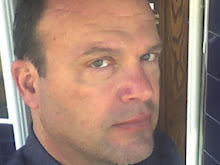
With this famously audacious assertion, André Malraux conveys some essential truths about Art and its function as a response to the human condition.
The genius of the shepherd Giotto arose more from contemplating the frescoes of Cimabue than in looking at his sheep.The standard story is that the artist Cimabue discovered the shepherd boy, Giotto, in a field sketching sheep. Malraux suggests that what made Giotto become an artist is that the totality of experience in standing before Cimabue's frescoes was somehow more moving, determinative, and real than his mundane experience. And while the frescoes of Cimabue and Giotto are iconographic, allegorical, and narrative, Malraux nonetheless leads us to the idea that the power of Art lies not in our ability to recognize in it some other experience, but in the felt experience of the work itself.
Photography is almost always conceived of as representational or, even more naïvely, as a document of real experience. But if the felt experience of viewing an image is paramount, then it may not invariably make sense to ask "what is it a picture of ?" Abstraction is inherent to photography, with some variables under control of the photographer (medium, focal length, aperture, shutter speed, etc.) and some a function of the environment (e.g., natural light). But creating an image that is something other than a record of the visual world requires that the artist exploit abstraction, and move with a purpose.
The image above is an example of my current body of work, an investigation into the use of the digital camera to create images that are not intended to refer to the perception of form in the environment in which they were created. Rather, the resultant image - which cannot itself always be perfectly pre-visualized or pre-cognized - claims legitimacy on its own. I have no interest in manipulating images and transforming them into abstractions using the tools available in the digital darkroom (other than to control contrast and balance color) - I prefer the kind and degree of abstraction available at the time of exposure. These include motion blur, selective focus, selection of subject with a smaller or larger scale than normal, and very long exposure times with a hand-held camera or a moving subject.


4 comments:
Hey,dinner was fun. Very glad to see you taking on art.
There was an artist in the old conceptual art days that took a flight across the nation. At predetermined times he would take a photo. His technique included leaving the lens cap on his camera as he took the photos.
Is that your own fresque de Cimabue?
John - No, it is a sketch of sheep in a meadow. - M
Read this one.
My previous post escaped in draft. Sorry. Here's what I meant to say:
I just looked at your Picasa pics and am trying to imagine composing them. There is a sense of walking in the dark, some of them also have a quality of getting into my chest and moving about and that movement is something to do with what I assess in them. For me, when that movement happens, that's not, to follow your metaphor, either learning from Cimabue or sketching sheep, something more like writing a poem with my eyes closed. Your work seems to be about the movement of consciousness, about how in making something we harmonize with what is given.
Post a Comment